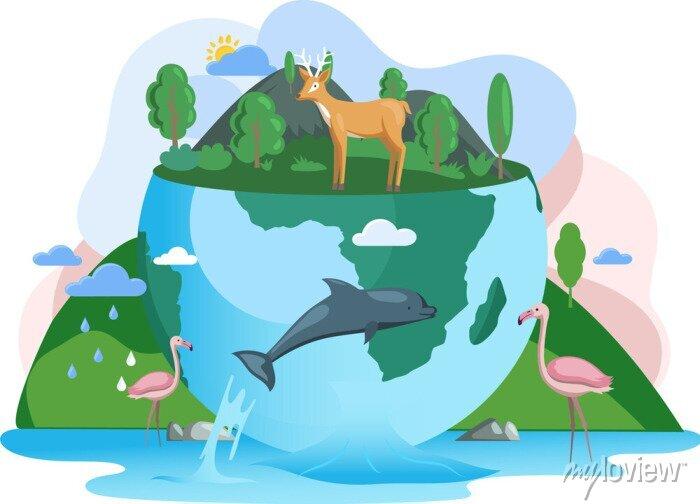---
In the intricate fabric of life on Earth, every thread counts. Biodiversity, the rich variety of life forms that inhabit our planet, is not merely a spectacle of nature to behold but a fundamental cornerstone of our existence. Yet, in the face of human activities, this tapestry is unraveling at an alarming rate. The urgency of conserving biodiversity has never been more evident, as we stand at the precipice of losing irreplaceable species and ecosystems.
At the heart of biodiversity conservation lies the recognition of interconnectedness. Each species, no matter how seemingly inconspicuous, plays a vital role in maintaining ecosystem balance. From the microscopic organisms that enrich soil fertility to the majestic predators that regulate prey populations, every living organism contributes to the intricate web of life. Like a symphony, where every instrument has its part to play, biodiversity orchestrates the harmonious functioning of ecosystems.
Yet, human activities, driven by short-term gains and unchecked exploitation, have inflicted severe damage on biodiversity. Habitat destruction, pollution, overexploitation of natural resources, and climate change have pushed numerous species to the brink of extinction. The loss of biodiversity not only diminishes the beauty of our natural world but also threatens essential ecosystem services upon which human societies depend, such as clean air, water, and fertile soil.
In the face of such challenges, biodiversity conservation emerges as both a moral imperative and a pragmatic necessity. It calls for a shift in our collective mindset, from viewing nature as a commodity to be exploited to recognizing its intrinsic value and the vital services it provides. Conservation efforts must encompass both protection and restoration, preserving critical habitats while also reclaiming degraded landscapes.
Crucially, biodiversity conservation is not a solitary endeavor but a collaborative venture that transcends borders and disciplines. It requires the engagement of governments, communities, scientists, and industry alike, each playing a unique role in safeguarding our natural heritage. Conservation initiatives must be guided by scientific knowledge, informed by traditional ecological wisdom, and supported by policies that incentivize sustainable practices.
Moreover, biodiversity conservation is not merely about preserving what remains but also about fostering resilience in the face of change. As we confront the realities of a rapidly changing climate, conservation efforts must embrace adaptive strategies that enable ecosystems and species to withstand and adapt to environmental pressures.
In the pursuit of biodiversity conservation, there is hope. Across the globe, inspiring examples abound of successful conservation initiatives that have reversed the decline of species, restored degraded habitats, and empowered local communities. From rewilding projects that reintroduce species to their native habitats to community-led conservation efforts that promote sustainable livelihoods, there are myriad pathways to safeguarding biodiversity.
As stewards of this planet, we are entrusted with the responsibility of protecting and preserving its precious biodiversity for future generations. The choices we make today will reverberate far into the future, shaping the world that our children and grandchildren will inherit. Let us rise to the challenge, not merely as caretakers of nature but as champions of life itself. In the tapestry of life, let every thread find its place, for in diversity lies resilience, beauty, and hope.
---
I hope this captures the essence of biodiversity conservation and inspires others to join in the effort to preserve our planet's rich tapestry of life.

